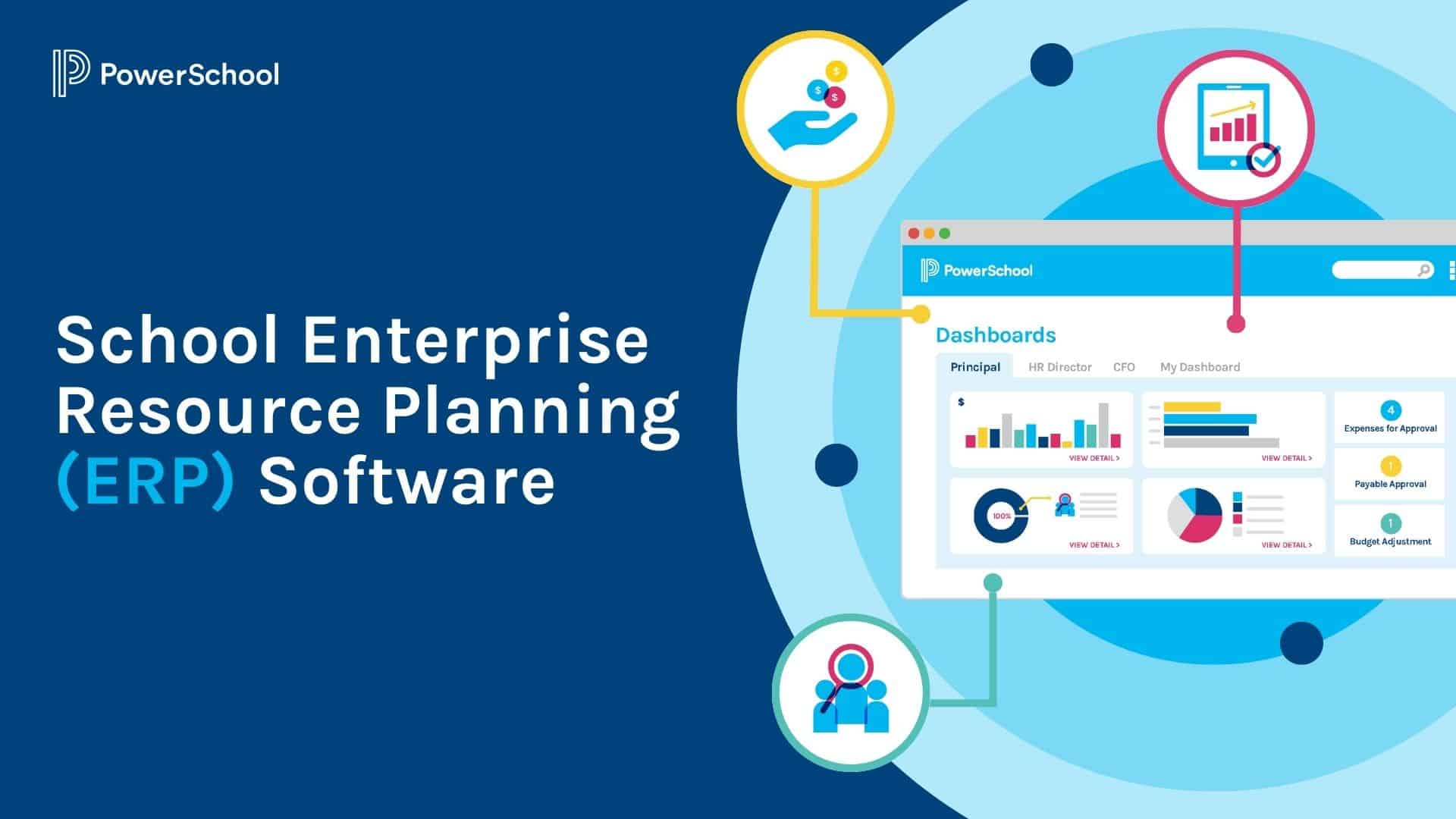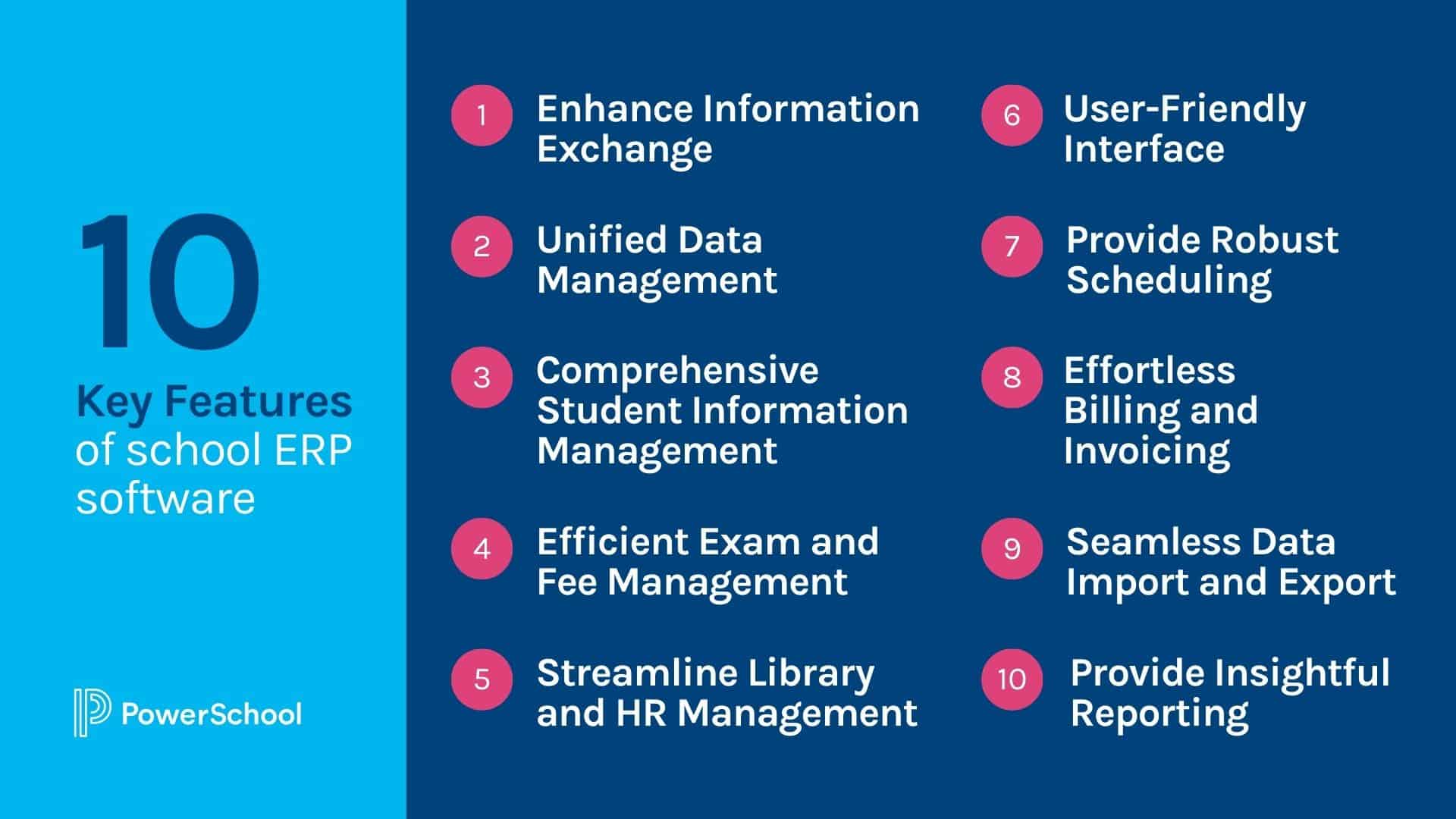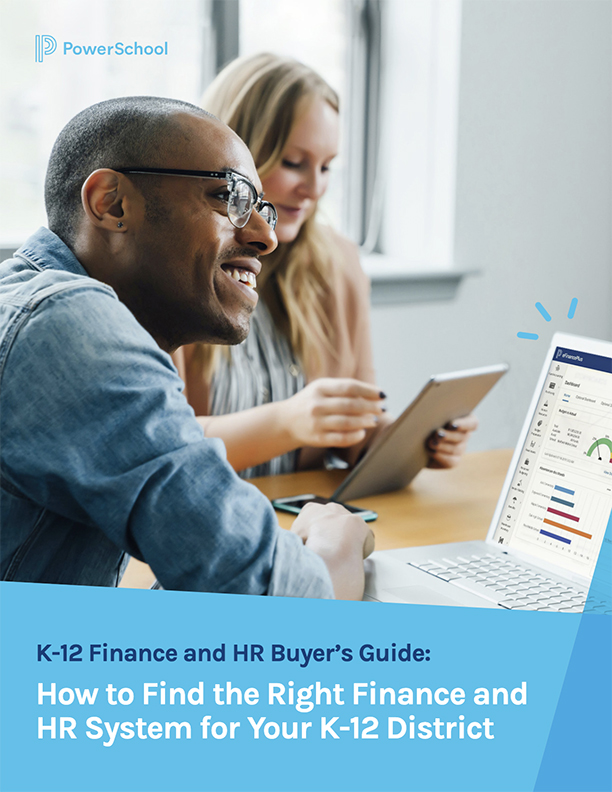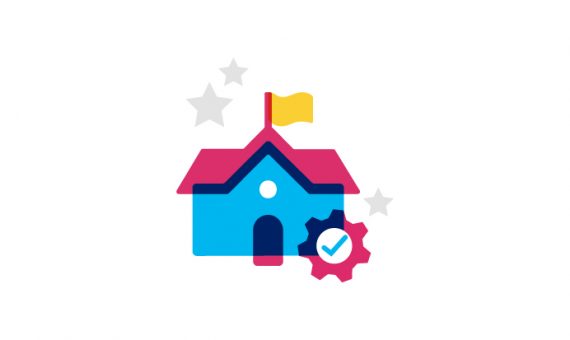
In today’s educational landscape, finance and business managers, superintendents, and HR directors grapple with an ever-growing list of hurdles. These include shrinking budgets and a decline in available resources. Navigating through intricate procedures across multiple products and making purchasing decisions often happens in isolated silos, adding to the mounting stress that keeps school leaders awake at night.
What is School Enterprise Resource Planning (ERP) Software?
A set of interoperable tools can simplify processes, bolster security, harmonize data, provide valuable insights, and encourage collaboration. Enterprise resource planning (ERP) systems offer schools and districts an integrated suite of business applications. These encompass areas such as finance, human resources, and talent management.
At its heart, ERP software is an integrated solution crafted to manage and streamline the critical business operations of an organization. Envision it as a central hub that collects the plethora of data and processes unique to your school or district.
The ERP software achieves this through various interconnected applications or tools. Each application is specialized for a specific department like finance, student records, or human resources, working in synergy to create a singular, user-friendly system. This interconnectedness enables data from disparate departments to merge into a single accessible database. Whether you’re drafting a complex end-of-year report or just need a brief look at your accounts receivable status, an ERP puts the information at your fingertips.
Thus, ERP software can transform how your organization manages data and records daily operations. Creating a central repository for your data eradicates redundancies and makes accessing and managing your information more efficient.
To sum up, a school ERP system is more than just a tool—it’s a comprehensive solution that empowers your organization to make data-driven decisions, streamline operations, and ultimately enhance the educational impact of your school or district.
Benefits of ERP Software for School Management
ERP software has evolved into an essential asset in today’s digital era. This robust system equips schools with the capability to plan, administer, and streamline their operations with unparalleled accuracy, offering a comprehensive overview of the institution’s performance for enhanced financial planning.
Further, ERP software bolsters effective communication among different departments, assuring unity regarding organizational objectives. This efficient coordination is crucial for adapting to change, operating within allocated budgets, and recruiting and retaining suitable employees, all of which eventually contribute to optimal student achievement.
The benefits extend beyond organizational dynamics. By facilitating strategic decisions, ERP software aids schools in meeting their educational goals and delivering high-quality education to every student. Let’s dive into the specific benefits of ERP software for school management.
1. Precision in Planning and Operational Management
Acting as a central hub across different departments, good ERP software lets you track organizational performance. ERP software also allows seamless integration among various departments, enhancing data accuracy and consistency. This tracking boosts financial planning and helps meet educational goals. ERP software organizes your information holistically and within individual applications, promoting efficiency and eliminating reliance on paper-based methods.
2. ERPs Streamline Finance and HR Management
One of the most critical tasks in school administration is managing finances. ERP software simplifies this task by integrating all financial data into a single system. From budgeting and expense tracking to accounting and financial planning, ERP systems enhance financial transparency and promote strategic decision-making.
The human resources department is integral to any school’s operation. ERP software provides an efficient, centralized system for managing employee data and payroll processes.
3. ERPs and Secure, Efficient Student Data Management
Student data, including grades and contact information, is sizeable and sensitive. ERP software brings structure and security to this data, consolidating it into one accessible platform. Cloud-based security mechanisms safeguard your data against potential cyber threats.
Additionally, a good ERP system aggregates essential student information in one place, simplifying the admission process and making it more efficient.
4. ERPs Secure Information Storage
Safe and secure data storage is a top priority in any educational organization. ERP software ensures data safety while keeping it accessible. It employs stringent security protocols and digital file systems to safeguard your information, whether it’s student data or employee records.
5. Efficiency through Automation
ERP software’s automation feature is a game-changer. It significantly reduces manual tasks, like compiling financial reports, saving time and positively impacting your bottom line. This technology can also efficiently monitor resources and inventory, eliminating manual tracking.
This benefit can also help free up teachers’ time by automating routine tasks, allowing them to focus more on enhancing their teaching skills and providing better education to students.
6. ERPs Reduce Paperwork and Simplify Reports
Through quick data analysis and report generation, ERP systems eliminate the need for manual report preparation. By digitizing administrative processes, ERP software reduces paperwork, saving time and reducing costs.
7. Cost Efficiency
By automating manual processes, ERP software enables focus on profitable areas of your organization, leading to potential downsizing and reduced operational costs. Schools can then utilize savings to improve the quality of education services.
ERP software also simplifies fee payments and collection, freeing administrative staff from manual record-checking. It also facilitates quick transactions and informs students and parents about fee payment statuses.
8. ERPs Improve Sharing and Communication
ERP systems improve communication and collaboration by providing real-time data access. Individual portals for various stakeholders facilitate better interaction among students, teachers, and parents.
9. Real-Time Data Record
Real-time data access through ERP software informs staff about ongoing developments, improving service delivery efficiency and overall education quality.
10. ERPs Centralize Data Management
ERP software provides a centralized system for data management by creating a hub for all your campus information. This consolidation facilitates seamless communication, preventing potential breakdowns.
ERP solutions can handle vast amounts of data and generate comprehensive reports, aiding in prompt and informed decision-making. These insights can lead to improved performance and enhanced student services.
The 10 Key Features of School ERP Software
School ERP systems can streamline intricate processes, improve information sharing, automate routine tasks, and transform your school into a more efficient, student-centric space.
Let’s explore the essential features of school ERP software.
1. ERPs Enhance Information Exchange
ERP software improves operations by facilitating seamless information flow between administrators, staff, and parents, ultimately fostering student-centric decisions. It aids in day-to-day task management and process control and promotes an upgraded, efficient campus environment.
2. Unified Data Management
A primary feature of ERP software is centralization, consolidating all departments into a single platform, which helps eliminate errors and redundant data, and enhances staff efficiency.
3. Comprehensive Student Information Management
With ERP software, storing, managing, and updating all student information, including academic records and personal details, becomes effortless.
4. Efficient Exam and Fee Management
ERP software makes planning exams, generating results, automating fee collection, and maintaining comprehensive payment records more efficient. An integrated exam planner allows teachers to establish schedules swiftly and accelerates the evaluation process.
5. ERPs Streamline Library and HR Management
ERP software enables efficient management of library resources, tracking of books, and administration of employee information, payroll, and leave records.
6. User-Friendly Interface
An essential attribute of ERP software is its user-friendly interface, ensuring successful implementation and a higher return on investment.
7. ERPs Provide Robust Scheduling
Keeping the school organized and on track is simplified with ERP software, providing access to teachers’ and students’ schedules and classroom assignments.
8. Effortless Billing and Invoicing
ERP software supports financial management with an efficient billing system, saving time on recording and managing manual payments.
9. Seamless Data Import and Export
With ERP software, you can quickly transfer student or employee details into and out of the system without duplicating content or losing data.
10. ERPs Provide Insightful Reporting
Track your course trends, performances, and grades with the ERP software’s reporting feature to enhance decision-making.
What is the difference between an ERP and an SIS?
When navigating the world of education technology, you’ll often encounter two acronyms: ERP and SIS. ERP is an acronym for enterprise resource planning, while SIS stands for student information systems. Despite managing data within an educational context, these two systems have unique attributes that differentiate them and make them suitable for different aspects of school administration.
Here are the main differences between an ERP and an SIS.
Operational Range
The most striking difference between the two is the operational range. An SIS specifically manages student data and the administrative processes related to it. Conversely, an ERP system presents a more comprehensive solution to manage and integrate all facets of an organization or business beyond student-related data.
Data Spectrum
An SIS handles mostly student-related data such as demographic details, academic records, and attendance. An ERP system manages diverse data, extending to financials, human resources, inventory, and supply chain management.
User Demographics
Typically, SIS users are educational institutions like K-12 schools, colleges, and universities. On the other hand, ERP systems cater to a broader range of organizations, including businesses, non-profits, and government agencies.
Integration Capabilities
While an SIS can integrate with other educational software systems like learning management systems (LMS), it generally doesn’t incorporate different types of business software. In contrast, ERP systems are designed to integrate across all business functions, fostering streamlined workflows and data sharing.
Customization
Both systems can provide customization options, but their flexibility is starkly contrasted. Ideally, an SIS offers customization options that cater to the specific needs of an educational institution. However, an ERP system provides a much higher degree of customization to meet the diverse needs of a business or organization.
To sum it up, while both systems manage data and facilitate administrative processes, their purpose, scope, and use cases make them distinctly different. An ERP system offers a bird’s eye view of an organization’s operations, while an SIS zeroes in on student-related data and processes.
Does PowerSchool Have School ERP Software?
PowerSchool offers a quality K-12 business software suite of secure solutions that can connect your entire district through a single partner.
PowerSchool eFinancePlus
Ensure the stability and efficiency of your daily financial operations with PowerSchool’s adaptable integrated solution, eFinancePlus. This K-12 school management software simplifies intricate administrative procedures, promoting faster implementation, informed decision-making, and remote accessibility. It’s designed to make your tasks easier and elevate the efficiency of your district’s operations.
Learn more about PowerSchool eFinancePlus here.
PowerSchool eSchoolPlus SIS
eSchoolPlus SIS streamlines the flow of district information, enabling your educators and administrators to prioritize what truly matters: delivering excellent education to students. It provides a secure, scalable, and easy-to-use web-based student information system for K-12, highly customizable, and always accessible. By minimizing the burden of everyday school tasks, PowerSchool’s eSchoolPlus SIS empowers your staff to concentrate on student achievement and district progress.
Learn more about PowerSchool eSchoolPlus SIS here.
PowerSchool BusinessPlus
Customize your district’s finance and HR workflows to cater to unique challenges and intricacies with BusinessPlus. It provides your team with the tools to streamline workflows and manage finances with up-to-date data, thus facilitating data-driven decision-making. This integrated finance and HR operations software helps different departments work harmoniously while simplifying processes and compliance.
Learn more about PowerSchool BusinessPlus here.
PowerSchool Atrieve (for Canada)
Atrieve is an integrated K-12 ERP system for Canada designed to enhance the efficiency and accuracy of your school board’s finance, HR, and payroll processes. This solution makes managing finance, HR, and payroll easier, allowing your team to accomplish more in less time with intuitive tools.
Learn more about PowerSchool Atrieve here.
How to Find the Best Finance and HR System for Your K-12 District
This buying guide looks at the key questions to ask when evaluating and choosing a finance and HR system to power your district operations. Download the eBook to find the right finance and HR system for your K-12 school or district.
Get Your Copy





